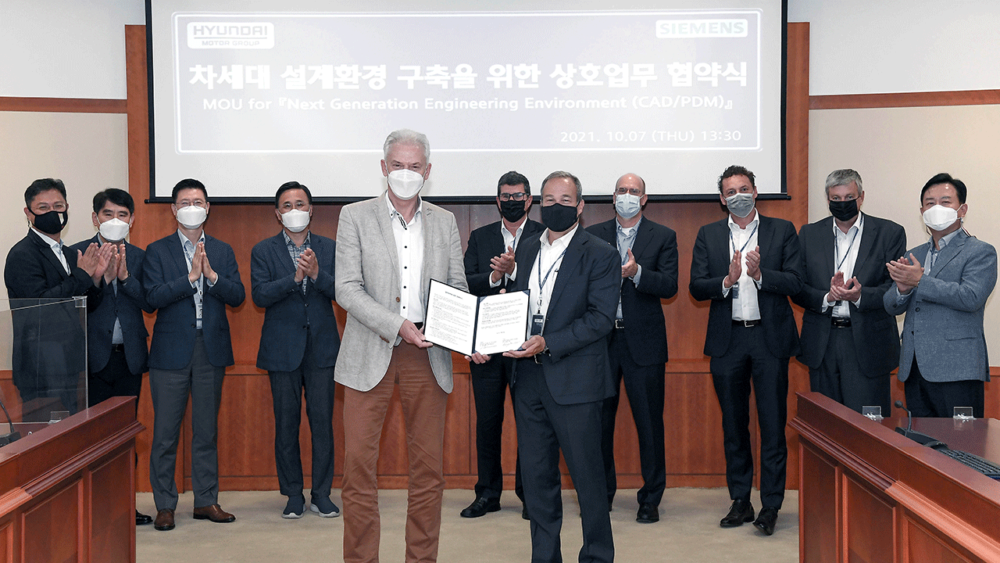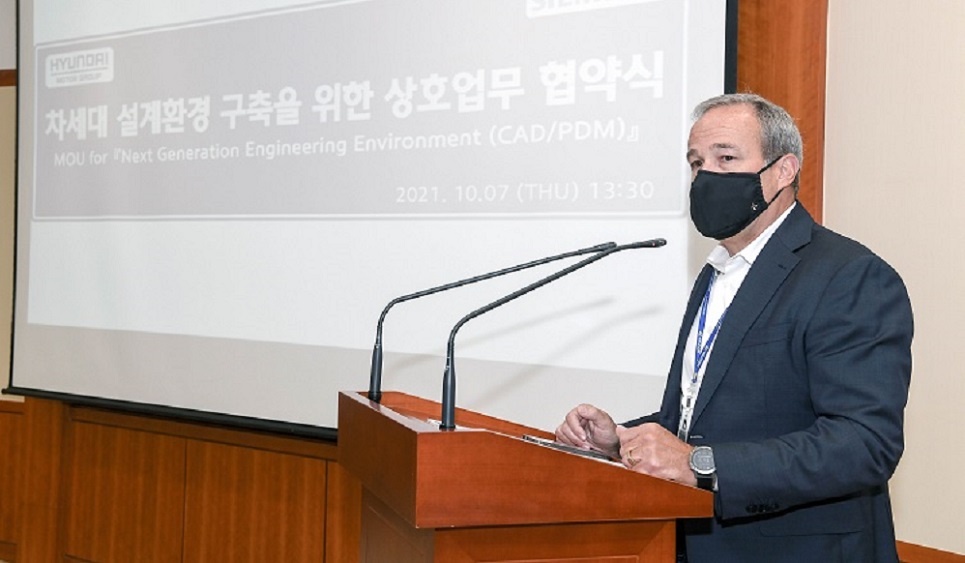Digital transformation: A partnership between Siemens and Hyundai-Kia

On November 29, 2021, it was announced that Siemens’ NX Software and Teamcenter Software from the Xcelerator Portfolio will replace incumbent solutions to become standard solutions for Hyundai and Kia’s next-generation data management and design environment.
This technology partnership will accelerate digital transformation within the organization and foster a new future of mobility.
To learn more about what this partnership means, how Xcelerator will help advance electric and autonomous mobility and how industries are discovering the benefits of digital transformation, I spoke with Paul Brown, Senior Marketing Director, Product Engineering Software at Siemens Digital Industries Software, to learn more.


How does the partnership with Siemens benefit Hyundai and Kia? What digital tools are they utilizing that they couldn’t before?
The key is bringing together the solutions into an environment where they can communicate information much easier. Having disparate, disconnected systems has been one of the challenges that a lot of companies face. The Xcelerator portfolio ties together lots of different tools, such as mechanical or electricals software, and collaboration opportunities to solve the bigger challenges.
The Xcelerator portfolio will help bring these domains and solutions together.
Why is Xcelerator the right fit for Hyundai and Kia’s goals?
Xcelerator offers best-in-class tools to Hyundai and Kia. They already have a number of tools from Siemens, but they also have tools from our competitors. Now they can consolidate them into a single source supplier, which gives them the opportunity to bring all these bits together.
That’s the important decision that was made. They can share a vision for where they can go in the future and also have access to the breadth of tools needed for electric vehicle development, which is what we have with the Xcelerator portfolio of products.
What does this mean for the advancement of electric and autonomous mobility?
The big thing there is looking at the platforms of how people need to work. With traditional power generation via powertrain machines, that’s a well-known science about how combustion engines fit into vehicles and interacts the body panels and the structure of the vehicle.
Now there are all sorts of new parameters, for example: batteries. Where do you put battery packs? How do you package them? How do you cross the domains? All of these elements around the electrical powertrains impacts decisions around shape and form — it’s not like you can position a liquid-filled fuel tank in certain places, you have the batch batteries to build into your structures, the characteristics of batteries in terms of thermal cooling, and more. There is a lot more potential impact to having an electric propulsion and electric powertrain than there were for the tried-and-trusted combustion-type powertrains.
Tying together the electrical, electronics, the systems with the mechanical for body design, panel design, structural design, etc., is going to be critical for anyone designing the next generation of electric vehicles. The integration of the disciplines will be more and more important because of these overlaps.
That’s why integrating the systems is critical.
What does Hyundai and Kia’s decision to go with NX and Teamcenter mean for digital transformation?
I think the lesson that you can learn is simple: there is a shift coming.
The use of software and electronics to do functions is a core part of design affecting every industry. For example, there is a small design house in the UK of about 20 people that opened about 20 years ago. Most of those employees were in mechanical and industrial design. Now, over half are software engineers and working with user interface design. Gone are the old buttons and switches and sliders — it’s all done with software and apps. The increasing integration of these systems, disciplines and tools is the reality most industries must prepare for and ensure they have the capabilities available for their teams to implement in their products.
Looking at point solutions and solving a problem without looking at the bigger picture and across the organization is not going to give you the benefits that you could get if you start looking across the whole process. The need to integrate the various disciplines involved in product design product is growing, not shrinking.
Learn more about the Siemens Partnership with Hyundai Motor Company and Kia Corporation


